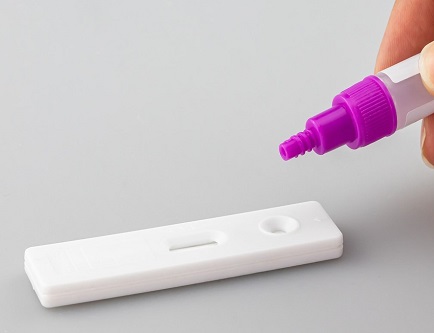How Do Lab-Based Drug Tests Differ From At-Home Kits? A Comprehensive Comparison
Choosing between lab-based drug tests and at-home kits can be a tricky decision for many. The stakes of getting accurate results are high, particularly when these outcomes might affect employment, healthcare, or legal situations. Lab-based drug tests typically offer a higher level of accuracy and reliability compared to at-home kits. While at-home kits may provide quick and convenient results, they generally lack the depth of analysis available through laboratory testing procedures.
Lab-based testing often involves a thorough process where samples are sent to a certified laboratory. This method includes both initial screenings and confirmatory tests, which provide precise information about drug use. These tests can detect a wide range of substances and assess the validity of the sample. In contrast, at-home tests are more straightforward to use, involving simple collection methods like urine or saliva samples. These can be useful for a quick check but might not deliver the same level of detail and accuracy.
Readers interested in understanding the differences and making informed decisions should consider their specific needs. A lab-based drug test could be necessary for situations requiring legally defensible results or when a comprehensive substance check is needed. On the other hand, those seeking a convenient and private way to test for drugs might find at-home kits sufficient for their needs. Balancing these considerations can help individuals choose the drug testing method that best meets their requirements.
Fundamental Differences
Lab-based drug tests and at-home kits differ mainly in their administration, accuracy, sensitivity, and time to results. These factors affect how each method is used and what kind of results they provide, impacting decisions in various testing situations.
Time to Results
Speed is a key difference between these methods. At-home tests deliver results within minutes, allowing immediate understanding of potential substance use. This quick turnaround is valuable for personal checks.
Lab-based tests take longer due to the processes involved. After sample collection, it might take days to receive results as they undergo rigorous analysis. This longer period guarantees comprehensive testing and result validation, often required for legal or professional situations.
Consider the UK drug testing kits find here; their time to results can vary based on the kit’s specific type and purpose.
Test Administration
Lab-based tests require a sample to be sent to a qualified laboratory. This process involves professional oversight, guaranteeing that the sample is collected, stored, and transported correctly. These tests often range from urine blood to hair samples that need precise handling.
In contrast, at-home drug tests are simple and can be used without professional help. They involve quick sample collection, such as urinating into a cup or swabbing saliva. Ease and convenience make at-home kits popular, but they might be prone to user errors.
Accuracy and Sensitivity
Lab-based tests are more sensitive and accurate. They involve advanced techniques to detect substances at lower concentrations, reducing false positives or negatives. Each positive result often passes through confirmatory testing to verify accuracy.
On the other hand, at-home tests provide results based on higher thresholds. These might lack precision in detecting low levels of substances, which makes them suitable for initial screening rather than confirmatory testing. Some reports indicate that lab tests excel in specificity and sensitivity.
Considerations for Use
Several factors are important to consider when choosing between lab-based drug tests and at-home kits. These include privacy, convenience, regulatory standards, and cost implications, each of which can significantly impact decision-making.
Privacy and Convenience
At-home drug tests offer greater privacy since individuals can administer the test themselves without involving a third party. This can be particularly appealing to those who value their personal space and confidentiality. Furthermore, at-home kits are usually easy to use and provide quick results, which many find convenient.
In contrast, lab-based tests require a visit to a testing facility, where professional personnel handle the sample. This process might feel invasive for some, but it offers more control over test administration and sample integrity. Lab tests may take longer to process because of the transportation and analysis times, but they generally provide more detailed results.
Regulatory Oversight
Lab-based tests are subject to stricter regulatory standards, making them a preferred choice for legal or professional settings. They include quality assurance protocols and are often confirmed by additional testing procedures to minimise errors. This rigorous process supports their acceptance in legal contexts where accuracy is necessary.
At-home tests, on the other hand, sometimes lack the same level of regulatory oversight. Due to the simplified testing process, they might not meet the necessary legal acceptability standards. As a result, they may be more suitable for personal testing or preliminary screening but not for situations requiring strong validation and verification.
Cost Implications
Cost is another important factor to consider. At-home kits are more budget-friendly than lab-based options. This is because they cut out the need for professional analysis and transportation fees. Individuals often purchase these kits for straightforward, cost-effective testing.
In contrast, lab-based tests are usually more expensive due to the comprehensive testing process and professional involvement. They include laboratory fees, staff costs, and additional confirmatory testing if required. While the higher price may seem a disadvantage, it provides an extra layer of accuracy and reliability, making it worthwhile in certain situations, like employment screenings.
Conclusion
Lab-based drug tests and at-home kits serve different needs. Lab tests are more precise and are often used in professional settings. They use advanced techniques like gas chromatography with mass spectrometry for accurate results.
At-home kits are convenient for quick, immediate answers. While they offer ease of use, they might not match the accuracy of lab tests. Each method has its own strengths, depending on the situation.
